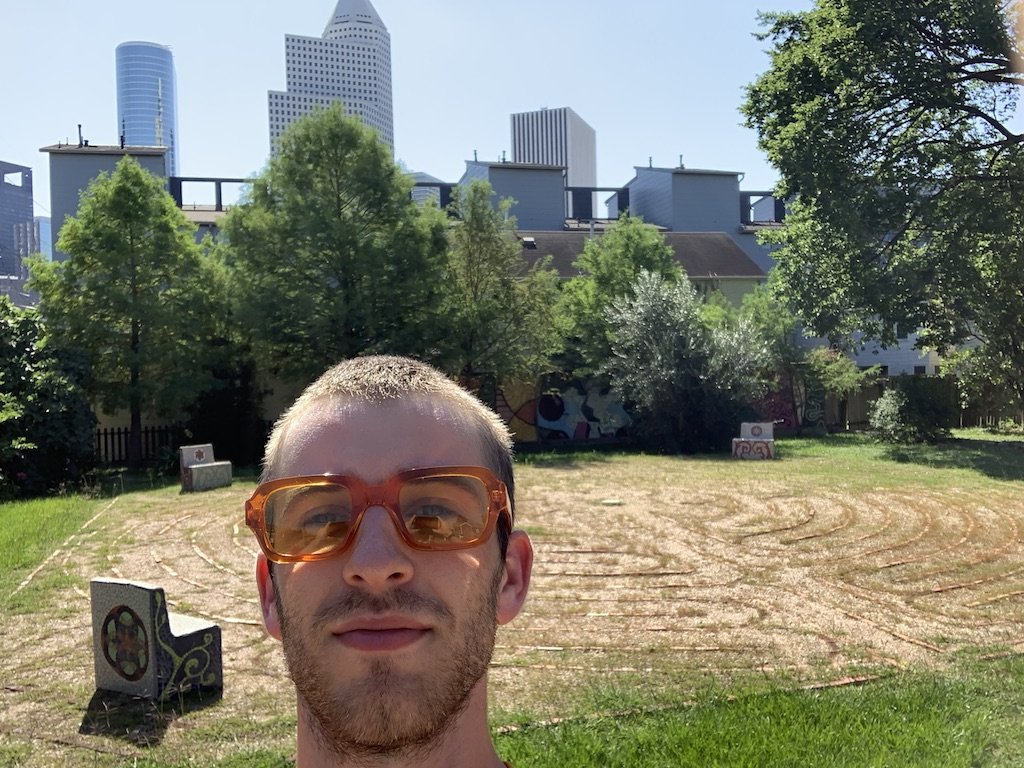Release, Receive, Return: Coaching Insights from Labyrinth Walking
I’m writing this dispatch from Houston, Texas in the final weeks of my Summer 2023 road trip. I thought of the topic for this piece—connecting coaching with labyrinth-walking—weeks ago, but I knew I wanted to wait to write it until I visited a labyrinth here that’s quite special to my family and me.
The Historic Freedmen’s Town Labyrinth
During his work with Rice University’s Boniuk Center, my dad led a program for high school students called the Sacred Sites Quest. It enhanced religious literacy, promoted interfaith dialogue, collaboration and tolerance, and culminated with a permanent public artistic expression of the SSQers’ adventures together. In 2014, that was the Historic Freedmen’s Town Labyrinth.
Following the Path
The Mt. Carmel Missionary Baptist Church was established by formerly enslaved Texans in 1915. In 1940, they built their church in Houston’s Fourth Ward; by 2008, the building was collapsing and the city tore it down. Six years later, my dad, his SSQ students, and many volunteers (a number of whom might be subscribed to this newsletter), built a prayer garden on the site centered around a labyrinth that repurposed the bricks from the church.
This was the context in which I first learned about labyrinths. A labyrinth is an ancient archetype dating back at least 4,000 years consisting of a singular, meandering path to a center. Walking a labyrinth is a meditative and/or spiritual practice in which you follow the path from the entrance to the center, pause, and retrace the path to exit.
The Three R’s: A Framework for Growth
On our breaks between moving wheelbarrows full of crushed granite to lay the path, my dad taught me the three R’s of labyrinth walking:
Release. Upon stepping up to the labyrinth’s entrance, release whatever you’ve brought to that moment that won’t serve you on your journey to the center (stressors, worries, frustrations, projections into the past or future). A deep inhale/exhale here is a useful ritual to embody this release.
Receive. When you arrive at the center of the labyrinth, take a moment to notice what has changed for you since stepping in. Maybe your breath is deeper, maybe your awareness more present, maybe you’ve had a realization about finding balance in some arena(s) of your life. By intentionally releasing, we create space to receive something we otherwise might not have found.
Return (or reintegrate). As you walk the same path in the opposite direction, you are bringing with you whatever you received on the journey. You’ve let yourself be changed by it. Returning to where you began, you have another chance to observe what you released, what you received, and how it might serve you moving forward.
Mapping the Labyrinth of a Coaching Session
In coaching, we use different tactics to create a very similar effect. I support my clients to observe their beliefs and conclusions so that they can see which ones are in the way of them achieving their goals. Release. In the space created by releasing those conclusions, my clients experience a new clarity that reveals something: maybe a lesson, maybe an intention, maybe an experiment worth running. Receive. Having received this new takeaway, every session closes with the client articulating what action they will take (and by when) to tangibly demonstrate whatever they received. Return.
The three R’s can be applied to any journey and I have been thinking of them often in the context of the road trip I am near completing: seven weeks down, one to go. I am in the final stretch, returning to where I began this journey (Philadelphia) and my last few stops are returns to two of my former homes (Houston and Atlanta.) I am noticing what I’ve released since departing, cherishing what I’ve received along the way, and feeling eager to reintegrate it all into my life upon my return.



